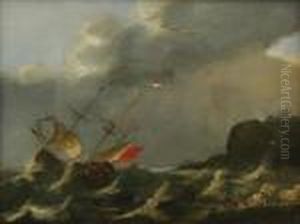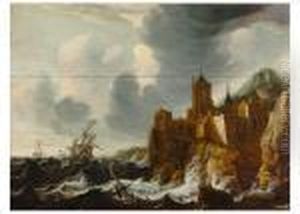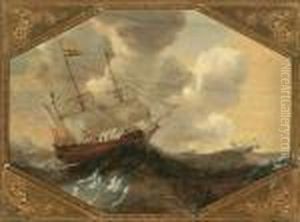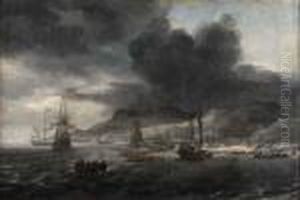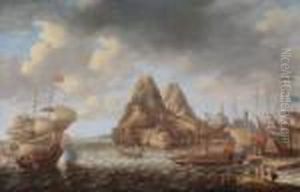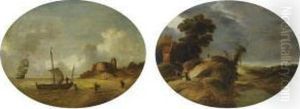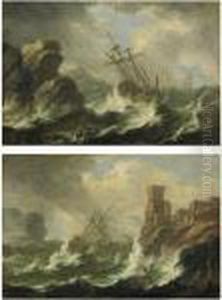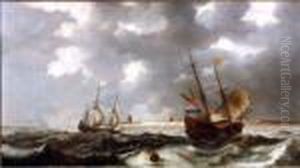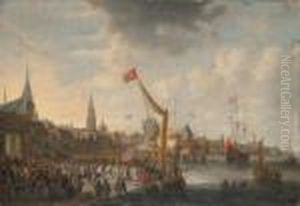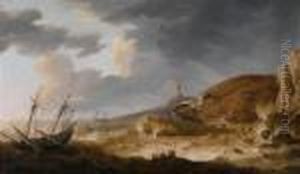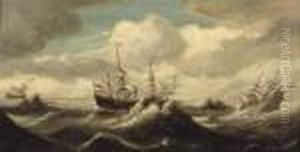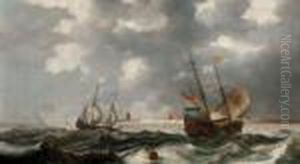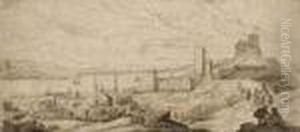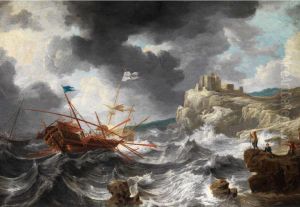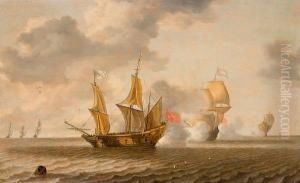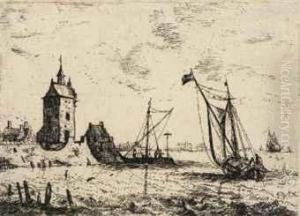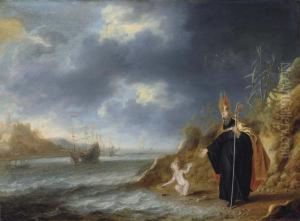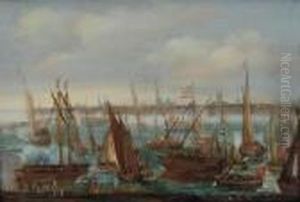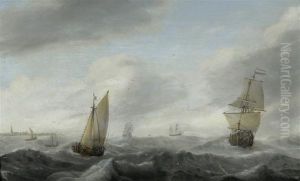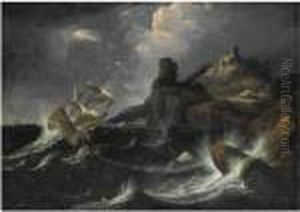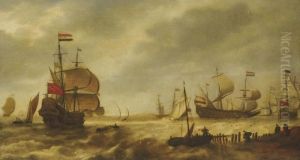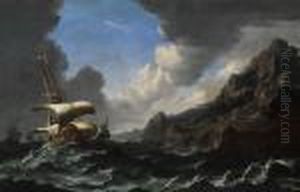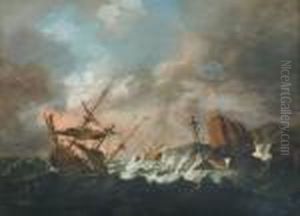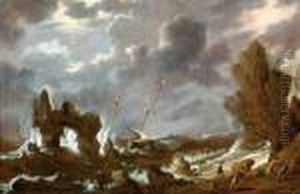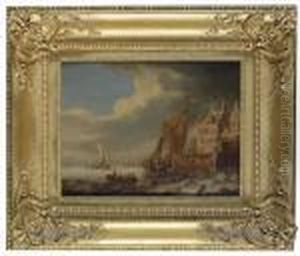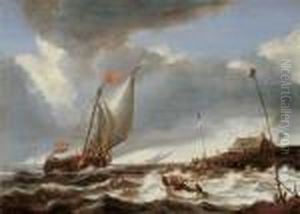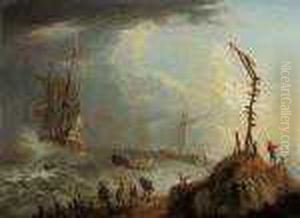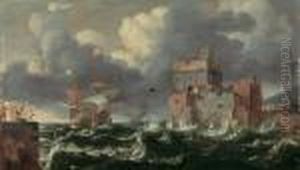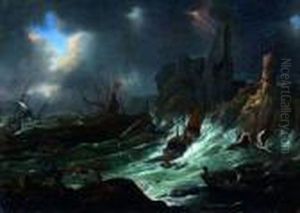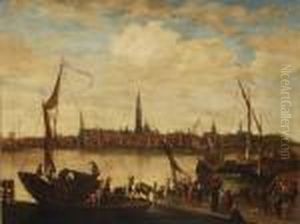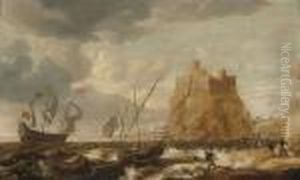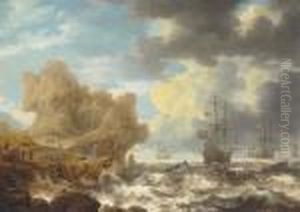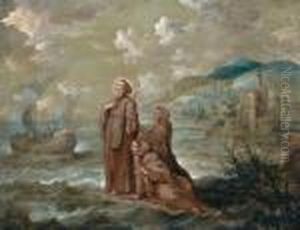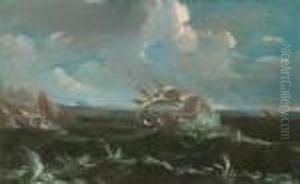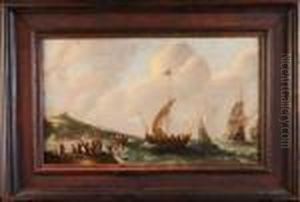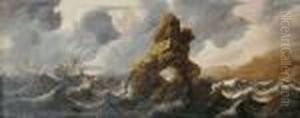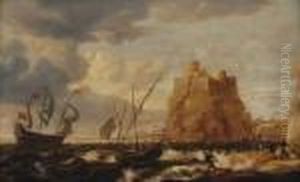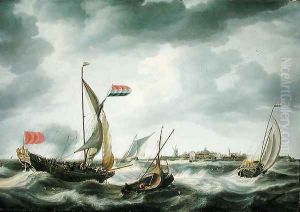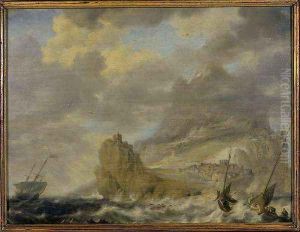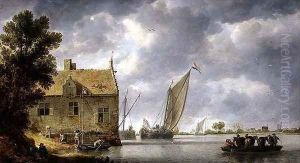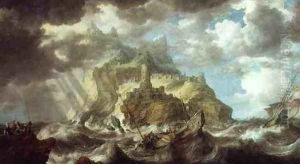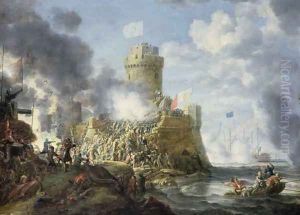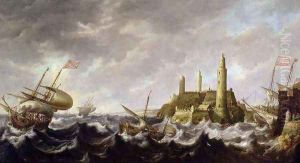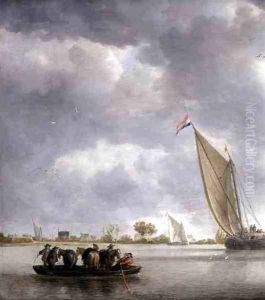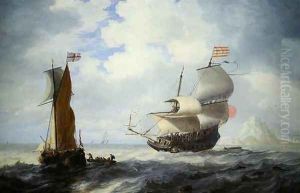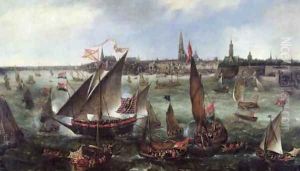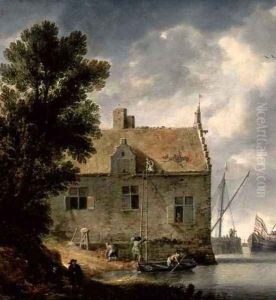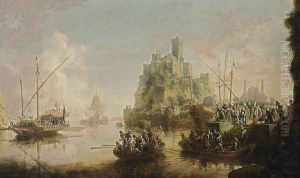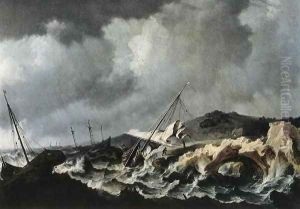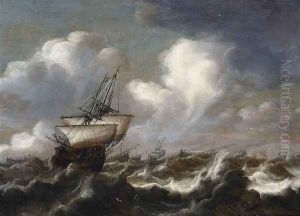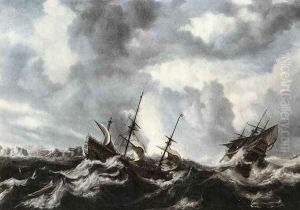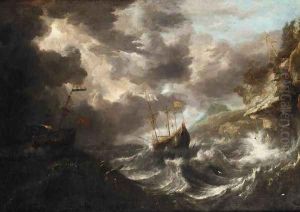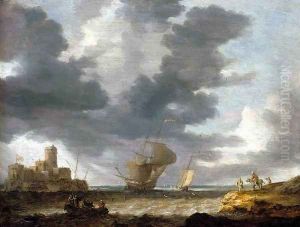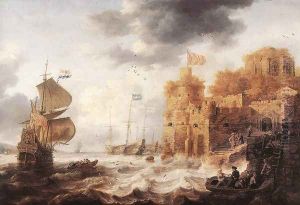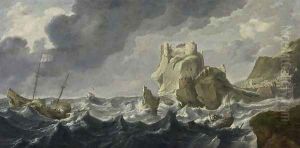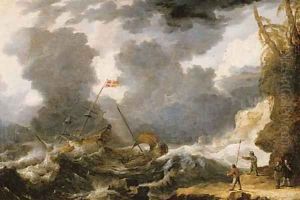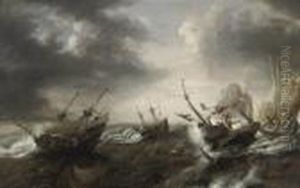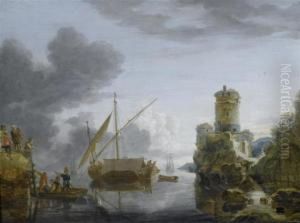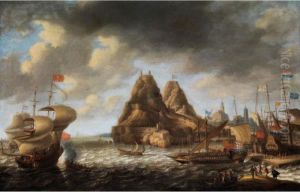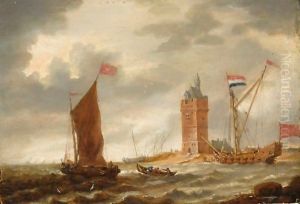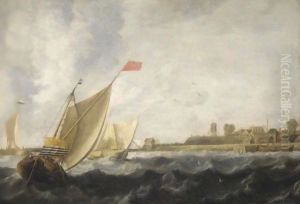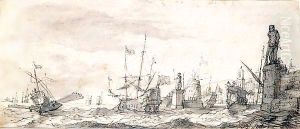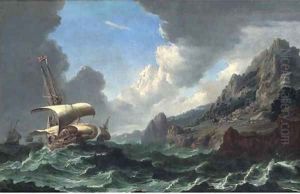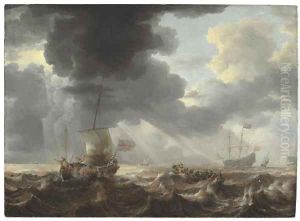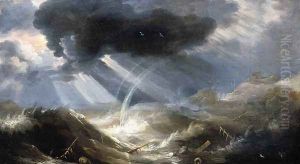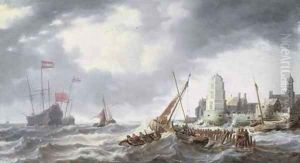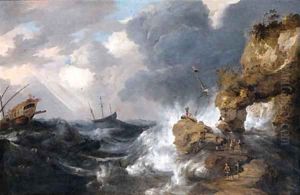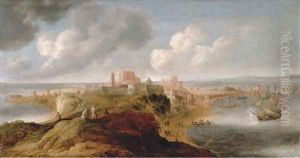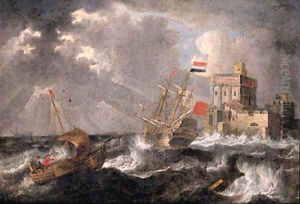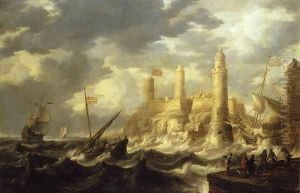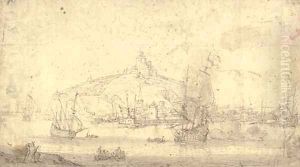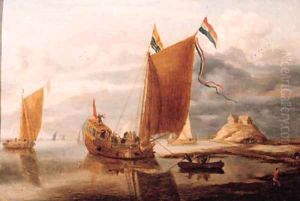Bonaventura, the Elder Peeters Paintings
Bonaventura Peeters, known as Bonaventura the Elder to distinguish him from his younger relatives who were also artists, was a prominent Flemish Baroque painter, draughtsman, and etcher born in Antwerp in 1614. He hailed from a family deeply entrenched in the artistic milieu of the time, with his brother Gillis Peeters and younger relatives Willem Peeters and Catharina Peeters all pursuing careers in art. This familial background provided a fertile ground for Bonaventura's development as an artist.
Bonaventura Peeters the Elder is best known for his marine paintings, a genre in which he excelled and contributed significantly to its popularity in 17th century Flanders. His works often depicted dramatic seascapes, shipwrecks, and naval battles, imbued with a sense of the sublime and the power of nature. He was adept at capturing the tumultuous movement of the sea and the sky, rendering them with a remarkable sense of realism and emotional depth. His maritime scenes are characterized by their dynamic composition, meticulous detail, and atmospheric effects, making him one of the leading marine painters of his time.
Peeters' talent was recognized early in his career, and he became a master in the Guild of St. Luke in Antwerp in 1634, a testament to his skills and the esteem in which he was held by his contemporaries. Despite the relatively brief span of his career, his influence was significant, and his works were highly sought after, not only in Flanders but also abroad. His paintings found their way into the collections of many European nobles and were particularly prized for their technical mastery and evocative portrayal of the sea.
His oeuvre also includes a number of etchings and drawings, which further demonstrate his versatility and skill as an artist. These works provide insight into his artistic process and serve as valuable studies for his larger compositions.
Bonaventura Peeters the Elder's work left a lasting legacy in the realm of marine painting, influencing subsequent generations of artists. His death in Antwerp in 1652 cut short a promising career, but his contributions to the art of his time have ensured his place in the annals of art history. Through his vivid and dynamic seascapes, Peeters captured the awe-inspiring power of nature, a theme that continues to resonate with audiences today.
